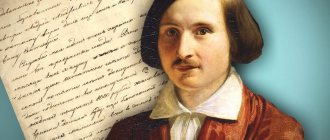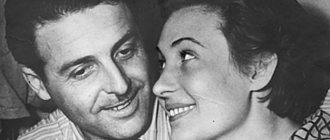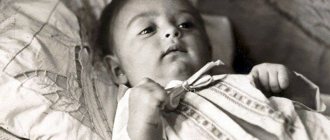Parents' marriage
If in 1711 the Pomeranian fisherman Vasily Dorofeevich Lomonosov had been told that his newborn son Mikhailo would someday marry the daughter of the Marburg brewer and part-time city mayor Heinrich Zilch, he most likely would not have believed it. However, a fateful meeting of young people did take place when three students from Russia arrived in Germany to study.
Tsilch's widow, Katarina Elizabeta, was strapped for money and, in order to feed her son and daughter, decided to rent out part of the house. She sheltered M.V. Lomonosov, D.I. Vinogradov and G.U. Raiser, and the young people soon became close to her children. Over time, the woman noticed that the Russian student Mikhail and her daughter Elizaveta were in love with each other, and demanded either to end the relationship or get married. At the same time, Lomonosov found himself in a rather difficult situation, since he did not have the means to support his family. In addition, the lovers’ belonging to different faiths was an obstacle. However, there was nowhere to retreat, since in November 1739 the couple had a daughter, Catherine Elizabeth, who was recorded in the documents as illegitimate. Be that as it may, in the summer of 1740, Mikhail Lomonosov married E. K. Zilch in the church of the reform community of Marburg, and a year later he left for Russia, leaving his wife, pregnant with her second child, to care for her sick mother.
Lomonosov. Personal destiny
Photo by Natalia Domrina.
‹
›
More than five thousand works of various levels have been written about the life and work of Mikhail Vasilyevich Lomonosov. However, they say little about his family, his mother, wife, children.
Lomonosov was born and spent his childhood and youth in the Arkhangelsk North. Pomerania has historically been an intermediary between the West and the center of Rus'. The situation of peasants in the North was largely similar to their situation in Scandinavia, where there was never serfdom. It is this circumstance that explains the presence of specific educational traditions and the peculiar character of the Scandinavians and Pomors. Enterprising people were formed from them, among whom were the Lomonosovs. The Lomonosov surname has been found in documents since the 16th century. Leonty - Mikhail Vasilyevich's great-grandfather - and his sons Luka and Dorofey were black-growing peasants. Luka rose to prominence among his fellow villagers, and at the beginning of the 18th century he was elected head of the village, but he did not give up his farm. Mikhail Vasilyevich's father Vasily Dorofeevich also established himself as an active person. In the village of Denisovka he had a house with a yard, a pond and a well. The yard had approximately half a tithe of land and lay in a flat depression, part of which was occupied by a wide pond. It was connected to the river by a ditch fenced off from the river by a grate. Fish were bred in the pond - at that time the only example of artificial fish farming in the North. There is an assumption that Vasily Lomonosov lost his father early, so one of his characteristic traits was “compliance with orphans,” that is, having experienced a bitter fate, he did not remain indifferent to the fate of other orphans. Being an orphan should be seen as the reason for his illiteracy, although literacy was widespread in the Lomonosov family. Since childhood, Vasily took care not only of himself, but also of his mother. Later, he told his son Mikhail that he acquired all his “contentment” through “blood sweat.” Vasily Dorofeevich was characterized as an energetic and observant person. According to the memoirs of his contemporaries, he was “simply conscientious, courteous with his neighbors,” “kind by nature,” “very religious,” and committed to the church, which was manifested in his concern for the construction of the stone Kurostrovsky Church. He personally donated 18 rubles to this charitable cause, and also collected funds in Arkhangelsk, on boats, and in his home at family celebrations. Vasily Lomonosov actively participated in church and parish affairs and in 1735 sought the allocation of land to the new deacon of the Kurostrovsky parish.
The “gifted son” inherited many of his father’s traits, while both “natural succession” and the personal example of the elder Lomonosov were important. The development of the personality of the future academician was influenced by the fact that Mikhail did not have to experience the degrading poverty that a significant part of the Russian peasantry had to endure.
Lomonosov's father was a typical Pomor in his views: he believed that the man in the house should provide prosperity, food, and warmth. Therefore, Vasily Dorofeevich was simultaneously engaged in peasant labor, fishing and hunting, and transporting goods. For him, both a home where he could warm up, relax, and gain strength for work, as well as its owner, were important. He married three times. His first wife, Elena Ivanovna Sivkova, gave him his only son Mishenka in 1711. Very little information has been preserved about Mikhail’s mother. Elena Ivanovna was the daughter of Matigorsk deacon Ivan Sivkov. Around 1708, Ivan Sivkov died, leaving his daughter an orphan. Probably in 1709 or 1710 she married 27-28-year-old Vasily Lomonosov. Being in adulthood, Vasily chose an orphan girl from a large number of possible brides. This indicates that for him the main thing was not material calculation, but love. Ethnographers of the North noted that Pomerania was famous for its wonderful women with delicate, pretty features. However, they were not inferior to men either in strength, dexterity, or hard work. Pomorka spent all day working around the stove, around the cattle, or with the children, and if she had a free hour in the evening, she sat down to spin the wool of her sheep, knitting, and sewing. The Pomeranian woman was very clean, to the point of being scrupulous. Public opinion strictly guarded her moral character. Thus, a blighter of impeccable behavior was called “slavukha”, and a walking person of free behavior was called “whistle”, from the word “whistle” - to walk around, to lead a dishonest, shameful life. A careless, wasteful woman, a destroyer, received the nickname “development” among the people. However, the Pomor knew: “A dashing wife is a legitimate wife.” A woman in the Russian North was not just a keeper of the hearth and everyday life. In the Pomeranian family there was a type of dual leadership - the presence of two heads of the family in the person of father and mother. The stability of society was largely determined by the stability of the family.
Elena Ivanovna was a good housewife and wife. Abandoned by her husband during his long and life-threatening trips across the White Sea, she focused her love on her baby son. With the caring care of a loving mother, the child grew up healthy, smart, and thoughtful. Mikhail was very attached to his mother, and her often mournful image was deeply imprinted in his soul. The mother gave him all her warmth and care, as if she felt death was approaching. Misha's carefree childhood ended in 1720, when Elena Ivanovna died. Mikhail Lomonosov kept his childhood memories of his mother deep within himself. Most likely, he was looking for his future wife in her image. So, the father really wanted to marry the minor Mikhail and even “conspired with a mean person in Kola to take his daughter for him.” But the son refused.
The appearance of his stepmother made his home strange and cold for Mikhail. Quite often the son came to his mother’s grave and mentally sought support. Leaving for Moscow with a convoy in December 1730, Lomonosov, according to legend, said goodbye to his native grave, as if he felt that he was doing this for the last time.
Unfortunately, Lomonosov left neither an autobiography nor memoirs that could be used to reconstruct his childhood, youth and other periods of life. In the surviving letters and works of the first Russian academician there is not a single word about his mother. This is understandable and explainable: he wrote about something else - scientific, social, and his personal life remained inside, but he called his daughter, born in 1749, by a name dear to him - Elena.
The desire for knowledge led Mikhail Lomonosov to Germany, first to Marburg, then to Freiberg. Baron Korf, who sent Russian students to study in a distant country, said: “I have heard a lot about the morals of the students there, and therefore be afraid of the main causes of human stupidity - women, wine, tobacco and beer!.. I believe that a great future awaits you ..."
In Marburg, the largest university city in Europe, Lomonosov spent four years of his five-year stay in Germany. Here, the talent and uniqueness of Mikhail Vasilyevich were noticed by his favorite teacher, the most famous philosopher-educator of Europe, Christian Wolf. Here Lomonosov met his future wife Elizaveta Tsilkh, who, by the way, was born on June 22, 1720, the year of the death of Lomonosov’s mother. Her father, Heinrich Zilch, was a brewer and was considered a man of middle income. By the time Lomonosov arrived, he was no longer alive.
The death of his father undermined the material well-being of the Zilch family. My mother had to rent out part of the house to tenants and students. Elisabeth's mother, Elisabeth-Christina Zilch (née Zergel), sought to financially provide for the lives of her two children: son Johann and daughter Elisabeth. Historian Wilhelm Eckhardt, former director of the Hessian State Archives, proved that the future academician lived in the city of Marburg in a house located in Wendelgasse lane 2. A memorial plaque was installed on it. The four-story building with a cozy courtyard still houses a student dormitory. The Wendelgasse lane is so narrow that the houses stand closely pressed together. From the house opposite you could see everything that was happening in the student rooms. We usually write that Russian students, succumbing to the temptations of freedom, led a cheerful lifestyle, and therefore felt the need for money. However, this is not true.
Student time is a wonderful time in any era. Russian students quickly made friends with their German peers and took part in youth feasts, parties, practical jokes, and brawls. There is evidence from the German Putter, who lived opposite Lomonosov’s house and studied his habits well. The future academician spent the bulk of his money on books and paid Frau Zilch for board and apartment. Modest in everyday life, Lomonosov, according to Putter, led a measured lifestyle, without excesses: his breakfast consisted of “several herrings and a good portion of beer.” Later, Putter got to know Lomonosov better and highly appreciated his diligence, wisdom of judgment, and way of thinking. Lomonosov’s teacher Christian Wolf also recalled this. His favorite student never missed classes and was diligent in his studies: “I loved to see in the lecture hall that high forehead, that look, shining with intelligence. But ah! How often is this forehead decorated with an ominous lump and the lamp under the eye shines brighter than the “radiance of the mind”... My royal friend, Emperor Peter the Great, calmed my anxiety regarding the amount of wine consumed by His Majesty at a time, saying: “Drunk and smart - two lands in him !” Alas! I see the truth of this saying in my Russian student... However, I have never seen my Russian student drunk - he’s a cunning beast!”
Lomonosov looked closely at Elizaveta Tsilkh for a long time, watching her. She attracted him with her homeliness, peace, and sincerity. Lomonosov's passion for a cute girl grew into a deep feeling. He understood love in a very unique way, which he later wrote about in his teaching on eloquence: “Love is the inclination of the spirit towards another person in order to derive pleasure from his well-being.”
How to create well-being for a loved one? This question worried Lomonosov, and at that time he could not give an answer. The young people had known each other for about two years, when in 1738 an explanation took place between them. Lomonosov well understood the responsibility that he took upon himself by choosing a German girl as his bride. Everything was complicated by two points: Lomonosov’s lack of funds to support his family and his beloved’s belonging to a different faith. Mikhailo Vasilyevich hoped that his financial situation in Russia would be more favorable for the life of his family. Elizabeth had to be persuaded to move to a country unknown to her. In February 1739 they got married without being married in church, and on November 19 their daughter Katerina-Elizabeth was born. In the church metric, with German pedantry, it is indicated: illegitimate, due to the fact that their marriage was civil, and not church. (The girl died shortly after moving to St. Petersburg.)
On May 26, 1740, Lomonosov finally got married to Elizaveta-Christina Zilch in the church of the reform community of Marburg. After this, he sought to quickly leave for his homeland and begin scientific work. He could not bring his young wife to an empty, uninhabited place. The couple agreed that Mikhail would send his wife an invitation and money for the move from Russia. The situation was complicated by the fact that Elizabeth’s mother was seriously ill, and she herself was expecting her second child, who was born on January 1, 1742, after Lomonosov left for St. Petersburg. Elizabeth named him Johannes. This was the only son of Mikhail Vasilyevich, who lived only one month and died on February 7.
After this, Elizabeth's mother dies. The shocks she experienced finally convinced Elizabeth of the need to go to her husband in Russia. But there was no news from him... Lomonosov, arriving in St. Petersburg on June 8, 1741, dreamed of quickly doing scientific work. Unfortunately, not everything in his life went the way he wanted. On January 8, 1742, Lomonosov was appointed adjunct (assistant professor, assistant) and carried out various assignments: compiling a catalog of minerals, translating articles, preparing scientific dissertations on materials brought from abroad. He was given a salary of 360 rubles a year and was allocated two rooms in the house of the Academy of Sciences.
The Academy of Sciences at that time was actually controlled by the German Schumacher, the head of the chancellery, who concentrated academic finances in his hands. Under the dominance of the Germans in the Academy, a natural Russian with his own opinion was not expected to achieve much advancement in his scientific career. He saw how he was “bypassed” by adjuncts lower in rank, but kindly treated by Schumacher. Lomonosov experienced constant dependence and petty control on the part of the academic bureaucracy. Even the German gardener did not allow him to take vegetables from the Academy’s garden, firewood, candles, etc. The scientist was indignant, his proud nature protested against such dominance of foreigners. As a result of sharp and violent clashes at the Academy, he was subjected to house arrest and served “under guard” for seven and a half months. He was released on the condition of “asking forgiveness for the insolence committed” from the professors of the Academy, which he did at a meeting of the Academy’s conference on January 27, 1744.
During his arrest, Lomonosov taught one of the students chemistry, mineralogy, poetry and wrote famous poetic reflections - “Evening” and “Morning”, a book on metallurgy, and conducted research in the field of physics and chemistry.
While in custody, Lomonosov several times appealed to the Academy of Sciences with a request to give him a sum of money to cover his unpaid salary. In August 1743, he wrote that he had not received money from the Academy for almost a whole year and “therefore came to extreme poverty. And now I, the lowest, am sick and, moreover, not only medicine, but also daily food, I have no money to buy for myself, and I cannot get money on loan anywhere.” On this petition, the hand of the secretary of the academic chancellery, Volchkov, was superimposed with a resolution: “For lack of money in the treasury, give Lomonosov five rubles.” In the account book there is the following receipt: “Adjunct Mikhailo Lomonosov took these five rubles, and instead of him due to illness, at his request, translator Nikita Popov signed for it.” A little later, Lomonosov writes a petition to the Senate to set an annual salary for the position of professor of chemistry at 660 rubles, since “chemical science consists not only of theory, but also of very difficult practice, which can be harmful to health.”
The point was that the Senate, having appointed him as a professor, forgot to set his salary. The consideration of the case by the Senate was delayed. Schumacher, in his submission to the Senate on July 10, 1745, wrote evasively: “Professors at the Academy have different salaries: some 860, others 660, younger ones 500.” The Senate decree assigning Lomonosov an annual salary of 660 rubles was signed only on March 14, 1746. There are a number of similar documents testifying to Lomonosov’s degraded financial condition.
Having no news from her husband, Elizaveta Tsilch began to look for him through the Russian envoy in The Hague. Her letter was received by Count A. Bestuzhev-Ryumin, and then by Y. Shtelin. Lomonosov sent her one hundred rubles for her journey, and, presumably, in the first half of 1743, Elizaveta Tsilkh, along with her four-year-old daughter and brother, came to St. Petersburg. Lomonosov's biographers suggest that after her arrival, their wedding took place in the Orthodox Church, which did not prohibit marriages between representatives of different Christian denominations, but considered it obligatory to raise children in the spirit of Orthodoxy. After this, Elizaveta Tsilkh began to bear the name of Elizaveta Andreevna Lomonosova. Restrained, outwardly strict and somewhat prim, Elizabeth had to completely rebuild her life.
Lomonosov's biographers assess this marriage differently. It can be assumed that the birth of an illegitimate child in 1739 allowed Lomonosov to experience a deep and reverent feeling of fatherhood. He probably felt nostalgia for his own family and understood that by the age of thirty a person should have his own home. The appearance of a little daughter imposed certain obligations on him to Elizaveta Tsilch and her family. Some believe that such an enviable groom as Mikhailo Lomonosov could have found himself a wife among Russian girls. However, fate decreed otherwise. He cannot be blamed for the fleeting feeling that led to a casual connection. Lomonosov was distinguished by his noble “stubbornness”, which allowed him to make objectively reasonable decisions. His marriage to Elizabeth was a carefully considered step. He knew his future wife for about four years and during this time he could be convinced of the sincerity and reliability of their feelings for each other. Moreover, he was almost nine years older than Elizabeth. Later, in his work “On the Preservation and Reproduction of the Russian People,” he wrote that such a difference in the ages of husband and wife is optimal.
Contrary to speculation, Lomonosov turned out to be a monogamous man and felt tenderness for his wife all his life. Elizaveta Andreevna subtly sensed her husband’s mood, protected him from everyday problems, and built a real cozy home in which everyone felt good. She took upon herself the thankless worries of life. The Lomonosovs moved into their own house on September 9, 1757. A standard project for “houses for eminent citizens” was used. In a letter to L. Euler dated February 1765, Mikhail Vasilyevich wrote: “...God helped me get my own house, and I have been living in the center of St. Petersburg for eight years now in a spacious [house], built according to my ideas, with a garden and a laboratory, and I am working at your discretion, all sorts of tools, experiments.” The house was two-story, with a mezzanine and side wings, and was located in the center of the city, facing the Moika River. They dug a pond in the yard and built an astronomical observatory. Subsequently, this mansion passed to the scientist’s daughter.
Busy with work, Lomonosov had practically no time for proper rest and entertainment. In order not to disturb the rhythm of the scientist’s life, the family limited the number of guests in the house. Thus, in a letter to Count I.I. Shuvalov dated January 19, 1761, Lomonosov wrote: “I have so much to do in various sciences that I have abandoned all companies; My wife and daughter are used to staying at home and don’t want to deal with comedians.” At the same time, there was a good tradition in the Lomonosovs’ house to invite good friends to visit. For example, a letter to Ya. Ya. Stehlin dated November 9, 1764 has been preserved with the following content: “I have something to talk with your honor, and other things to laugh at some new Kretze-Luft-Vogelein. I humbly ask you to have a cup of tea after dinner, which will greatly oblige me.”
There is evidence that Mikhail Vasilyevich attended balls and masquerades with his wife. At one of them, Elizaveta Petrovna gave her an original fan.
Mikhail Vasilyevich's students - Alexey Protasov, Ivan Barkov - constantly visited the Lomonosovs' house. Count Ivan Ivanovich Shuvalov visited him quite often. Lomonosov's wife and daughter loved to meet him. I. I. Shuvalov was 13 years younger than Lomonosov, but, educated in a European way, he well understood the scientist’s purpose for the glory of Russia, therefore he supported Lomonosov’s endeavors in organizing Moscow University, developing education and science. The first Russian academician wrote: “I conceived and thought about this great school, bothered, carried it out and gave birth to it; He brought him up with hot tears and let him live, and beyond the grave I will begin to pray to God for him...”
According to the recollections of Matryona Evseevna, the Lomonosovs’ niece, who lived with the Lomonosovs, guests were always welcome in the scientist’s house, especially northerners. Then “an oak table was laid on the wide porch, and the son of the North feasted until late at night with his cheerful fellow countrymen, who came from Arkhangelsk on ships and usually brought him pickled cloudberries and herring as gifts. Exactly the same treat awaited other townspeople who arrived on the first winter route to St. Petersburg with cod.”
On hot summer days, surrounded by books and papers, Lomonosov wrote from morning to eight in the evening in the gazebo. Niece Matryona Evseevna quite often ran to the cellar for beer, since her uncle favored this drink straight from the ice. The scientist loved to work outdoors. In the summer, he did not leave the garden, which he looked after, grafting and cleaning the trees. He observed something similar in Germany. “Sitting in the garden or on the porch in a Chinese robe, Lomonosov received visits not only from his friends, but also from the nobles themselves, who valued the fame and merits of the poet above their armorial; most often and longest of all of them, his famous patron of the arts, Ivan Ivanovich Shuvalov, stayed with him... It used to be that my dear one would read and write so much that he didn’t drink for a whole week, didn’t eat anything except March (beer) with a piece of bread and butter.”
On June 7, 1764, Empress Catherine visited the Lomonosov house (see page 4 of the cover). She looked at the scientist’s mosaic works dedicated to Peter the Great, the physical instruments he invented, observed physical and chemical experiments, and had lunch with the scientist’s family. After this, the Empress invited the Lomonosovs to visit her: “Tomorrow come to me to eat bread and salt, I will have cabbage soup as hot as your hostess treated us to.”
The Lomonosov family very warmly welcomed their nephew from Matigory, Mishenka Golovin, named after his uncle. This is evidenced by the only letter from Lomonosov that has survived to this day to his half-sister Maria Vasilyevna Golovina, dated March 2, 1765. The letter was written a month before the scientist’s death. In it, he reports how a nine-year-old boy from the distant northern Matigory, which is located near Kholmogory, is getting used to a new life: “Mishenka arrived in St. Petersburg in good health... he can read very well and regularly also writes for the child deliberately. From the moment he arrived, a new French dress was made for him, shirts were sewn and he was completely dressed from head to toe, and he did his hair in our own way, so that he would not be recognized in Matigory. What is most surprising to me is that he is not shy and immediately got used to us and our food, as if he had lived with us for a century, and did not show any sign of being sad or crying. The day before yesterday I sent him to the schools of the local Academy of Sciences, which are under my command, where forty children of nobles and commoners are studying and where he will live and study under good supervision, and on holidays and on Sundays he will have lunch, dinner and spend the night with me in the house. I was ordered to teach him Latin, arithmetic, clean and good writing and dancing. Yesterday evening I was in the schools on purpose to inspect how he gets along with the schoolchildren in the dormitory and with whom he lives in the same cell. Believe me, sister, that I am trying to take care of him as a good uncle and godfather should. Also, my mistress and daughter love him and are satisfied with everything. I have no doubt that through teaching he will be happy. And with true love I abide your brother. Mikhail Lomonosov".
Subsequently, M. Golovin became an adjunct of the Academy of Sciences, a professor at the St. Petersburg Teachers' Seminary, which for the first time in Russia began to train teachers for secondary schools. Misha Golovin always warmly remembered his famous uncle and his cozy home... However, his life was very short: he died at 34, leaving no heirs.
Mikhail Vasilyevich Lomonosov, like a man, like a Pomeranian, protected the peace of his family. Elizaveta Andreevna tried once again not to worry him with everyday problems. However, she was very worried about her German neighbor Sturm, a good friend of Schumacher.
Elizaveta Andreevna planted flowers near her house, monitored the cleanliness and order around it, raised chickens and cats. Sturm, trying to annoy Lomonosov's wife, poured dirty water on the flower beds and scattered the animals. Lomonosov warned his neighbor several times, but one day his patience ran out, and the scientist’s anger was terrible. This is how Sturm himself described it: “My birthday celebrations were overshadowed by Lomonosov’s atrocities. Twenty German gentlemen and ladies, my guests, went to sing the innocent madrigal in the Lomonosov palisade. Suddenly, steamed turnips, sauerkrauts, boards and logs fall on the heads of the chanted 9 gentlemen and damens from the window of Lomonosov’s apartments. My wife and I rang the bell on the door, but he escaped with a broken railing and screaming: “It’s good to tease a bear from the window!” - the German gentlemen chased along the street, barely had time for the hospitable door to slam everyone in my house. But he stole two damentolets on the move and lost the kleinod on the front. My wife and I rushed to the balcony to water it and accidentally, perhaps, dropped flower pots. But Lomonosov put the door on a hook and fought in our rooms. He hit twenty gentlemen with his tackle. And they even jumped out of the windows and shouted guards everywhere! The Zoldaten garrison has appeared in Dondezh!!” It is known that Lomonosov had big troubles after this conflict. The wits wrote rhymes about this: “The German is gutt, and the Russian is here!” Even Empress Catherine told the guests that “the Russian gave the Germans a hard time!..” Nevertheless, Lomonosov protected his family from the rude attacks of his neighbor. Subsequently, such conflicts no longer occurred.
Almost no documents or memories have been preserved about the life of the Lomonosov family. The head of the family was a supporter of the idea that “they don’t wash dirty linen in public.” It should be noted that in the Complete Works of Lomonosov there are a number of documents indicating the difficult physical, moral and financial situation of the scientist’s family. So, on July 24, 1762, Lomonosov wrote to M.I. Vorontsov that “my serious illness, having intensified again in the other leg, does not give me peace and freedom, not only from home, but also from getting out of bed.”
The disease actively developed from February 1762. On July 25, 1762, the copyist who carried office journals for signature was not allowed to see Lomonosov, and it was announced to him that “Mr. Advisor, due to illness, cannot go to the academic office and sign affairs in the house.”
According to the recollections of contemporaries, in the last years of his life, Lomonosov became extremely absent-minded and often during lunch, “instead of a pen, which he liked to put behind his ear out of school habit, he put a spoon with which he drank hot food, or wiped himself with his wig, which he took off when he started drinking.” for cabbage soup...” During this difficult period, the Lomonosov family became even friendlier and more united. The daughter helped her mother take care of her father. One of the Italian professors, having visited their house, said that he had never seen a happier family.
Almost no documentary evidence has survived about Lomonosov’s daughter, Elena, as well as about his wife. It is known that she was a highly educated girl who knew languages, literature, and music. Her parents took care of her upbringing. A month before Lomonosov’s death, mother and father blessed their daughter to marry the chief librarian of the Imperial Library, Alexei Konstantinov, the son of the Bryansk archpriest. Alexey was twenty-one years older than Elena. Since 1750, Konstantinov studied natural sciences at the Academic University with I. A. Brown and poetics with Lomonosov. On September 15, 1766, the marriage of Alexei and Elena took place. She inherited from her father a factory in Ust-Ruditsa, where the whole family often lived for a long time. The Konstantinovs lived together for only six years: in 1772, Elena died at twenty-three years old.
She died young, like Lomonosov's mother. The Konstantinov family had four children: son Alexei, daughters Sophia, Ekaterina and Anna. Alexey lived for thirty-six years after the death of his wife. He died in 1808. Both were buried almost next to Lomonosov’s grave at the Lazarevskoye cemetery of the Alexander Nevsky Lavra. Their children continued the Lomonosov family. Daughter Sophia married N.N. Raevsky, they had five children. The Raevsky family had close relations with Pushkin. The youngest daughter, Maria Nikolaevna, married Prince S.G. Volkonsky and shared with him an exile to Siberia. Descendants in the female line of the Lomonosovs became related to the famous surnames of Russia. However, after 1917, almost all of them left the country.
Mikhail Vasilyevich, according to the memoirs of contemporaries, did not really want his daughter’s marriage to Konstantinov. It’s hard to explain now, but we can assume the following. Firstly, he knew his future son-in-law quite well as his student. Secondly, Konstantinov was much older than Elena. Lomonosov, as is known, was an opponent of such an age difference between those entering into marriage. As a loving father, he wished only happiness for his daughter. But, feeling his approaching death, he blessed the young. At this time, Lomonosov practically never left the house.
On March 4, 1765, the scientist stopped visiting the Academy of Sciences. At the beginning of April, he wrote a draft petition to the Senate, in which he indicated that in the event of his death, the “mosaic work” he had begun could be entrusted to his brother-in-law Tsilkh and the mosaic master Vasiliev. On April 4, 1765, at five o’clock in the evening, having said goodbye to his wife, daughter and other people who were in the house, the first Russian academician died.
After the death of her husband, Elizaveta Andreevna found herself in a difficult financial situation. Having been married for almost thirty years, she felt protected and sufficiently secure. Now she had to solve all economic issues on her own. As a state councilor, Elizaveta Andreevna was entitled to her husband's annual salary in the amount of 1875 rubles, minus the debt of the Academy of Sciences in the amount of 667 rubles 45 and a half kopecks. However, she never received this money. On May 7, 1766, Lomonosov's widow asked I. Elagin, who was close to the empress, to help her receive a pension. Elizaveta Andreevna could not resist the troubles that fell on her shoulders. In 1766 she died. Neither the exact date of her death nor the place of burial are known. She outlived her husband by only a year and a half, having lived in the world for only forty-six years...
In the Russian North there is a good word - “bereginya”. This is the name given to a woman who is the keeper of the family hearth. This is exactly what Elizaveta Andreevna was like.
Brothers and sisters
In addition to Catherine Elizabeth, M. Lomonosov had a son, Ivan (Jogan), in Germany in 1741. Elena Mikhailovna never saw her brother and sister, since both of them died before her birth. Ivan Lomonosov lived only a few months and was buried in Marburg, and Catherine Elizabeth died of illness in 1743 immediately after arriving with her mother and uncle Johann Zilch in St. Petersburg.
Important dates in Lomonosov's biography
- November 19, 1711 - birth in the village of Mishaninskaya.
- 1730 – obtaining a passport in Kholmogorsk. Travel on foot to Moscow.
- 1731 - becomes a student of the Moscow Slavic-Greek-Latin Academy.
- 1734 – admission to the Kiev-Mohyla Academy.
- 1736 – admission to St. Petersburg Academic University. October – trip to Germany.
- 1739 - marriage to Elisabeth-Christina Zilch. Birth of a daughter.
- 1740 - fled to Russia.
- 1741 - return to St. Petersburg. Birth of a son.
- 1742 – adjunct of the Academy’s physical class.
- 1745 – Professor of Chemistry at the Academy.
- 1746 - gives lectures on physics in Russian.
- 1748 - created the country's first chemical laboratory.
- 1749 – birth of the second daughter.
- 1752 - begins to lecture on physical chemistry in Russian.
Childhood
Elena Lomonosova, whose parents at that time were already able to formalize their relationship in Russia, was born on February 21, 1749 in St. Petersburg, in the Bonov House on Vasilyevsky Island, in an apartment provided to her father by the Academy of Sciences. When the girl was 8 years old, her family finally got their own home on the Moika. In this house, built according to a standard design especially for Lomonosov, she spent most of her short life.
Apparently, the always busy father did not devote enough time to the education of his only daughter. When Elena Mikhailovna Lomonosova grew up a little, her mother was her teacher for a long time, who taught her German. At the same time, the girl grew up surrounded by her father’s students, who often visited their home, and communication with the most educated people of that time could not but have a beneficial effect on her.
Childhood and youth
Lomonosov's biography is like the riddle of the Sphinx, because the name of Mikhail Vasilyevich is surrounded not only by auras of mystery, but also by speculation and fables. For example, some writers claim that the Russian genius was born into a poor family that could barely make ends meet, and then, as if driven by an unknown force, he went to the very heart of Russia.
Lomonosov was born on November 8 (19), 1711 in the village of Mishaninskaya, Kurostrovskaya volost (now the village of Lomonosovo, Arkhangelsk region). The boy grew up and was raised as the only child in the wealthy family of Pomor Vasily Dorofeevich, who was known as a merchant and traded fish on his own ships.
According to the memoirs of Mikhail Vasilyevich, his father was a kind man, but extremely ignorant. When the gifted boy was 9 years old, his mother Elena Ivanovna died. After the death of his wife, Vasily Dorofeevich tried to build happiness with a certain Feodora Mikhailovna Uskova. But this beloved suffered the same fate: Theodora died in 1724, three years after her marriage.
In the same year, 1724, Lomonosov Sr. married for the third time to the widowed Irina Semenovna Korelskaya, who appeared to 13-year-old Mikhail in the form of an evil and envious stepmother, poisoning the life of her little stepson.
Rumor has it that Mikhail helped Vasily Lomonosov fish from the age of ten. Before dawn, father and son took a wicker net with them and set off for the White Sea. Mikhail Vasilyevich loved to swim across the endless expanses of water, admiring the blue of the sea waves, the beauty of the blue ice and the receding shore. And all the dangers encountered along the way, on the contrary, strengthened the young man’s physical strength. Lomonosov's numerous observations enriched his mind with reflections on the structure of nature.
It is known that Mikhail Vasilyevich became addicted to reading books from an early age. Young Lomonosov began to be taught to read and write by the local sexton S.N. Sabelnikov, who taught the young man algebra, grammar, and also introduced him to the wonderful world of literature. As a 14-year-old teenager, Mikhail read well, so he spent days and nights poring over various textbooks. We can say that he zealously devoured one book after another, trying to add new information to his treasury of knowledge.
Many people know the legend from school that Mikhail Vasilyevich, thirsting for new discoveries, went on foot to Moscow in order to receive a decent education. The reason for such an extraordinary act was an unbearable existence in his home, namely endless conflicts with Irina Semyonovna.
The stepmother did not like the fact that Mikhail spent all his free time leafing through books. In addition, Vasily Dorofeevich wanted to marry his son and therefore, secretly from his child, found him a bride. Having learned about his father’s idea, Lomonosov used cunning: the young man went to bed and pretended to be sick, so the wedding ceremony had to be postponed until he “recovered.”
Burdened with the hardships of life, Lomonosov, without thinking twice, collects his things (two shirts, a sheepskin coat and several books), waits until nightfall and, without saying goodbye to either his stepmother or his father, secretly runs away from home. On the third day of the journey on foot, in December 1730, the young man caught up with the caravan and asked the fishermen for permission to go on a long journey with them. After three weeks of wandering through snowdrifts, in January 1731, Mikhail Vasilyevich arrived in the capital. The approximate distance from his home village to the heart of Russia is 1160 km.
There is still debate among scientists to this day, because some are sure that a 19-year-old boy could not cover such a distance on foot, especially in winter. However, the fact that Lomonosov traveled with a fish train means that the young man often alternated between relaxing on carts and walking. According to another version, Mikhail Vasilyevich traveled a significant part of the journey on horseback. Lomonosov wanted to become a student at the Slavic-Greek-Latin Academy, so in order to carry out his idea, he forged documents and for a time became for the rector's office a descendant of a Kholmogory nobleman.
Mikhail Vasilyevich stayed at the educational institution for five years, during which time he studied the Latin language, theological books and became acquainted with the “then” science. According to the scientist’s recollections, fellow students made fun of him at the academy, since Lomonosov was poorly dressed (he was content with one altyn a day). In 1735, Mikhail Vasilyevich was enrolled in St. Petersburg University at the Academy of Sciences, where he learned the basics of mathematics, physics and tried to write poetry.
A year later, in March, Mikhail Vasilyevich and twelve other capable university students, by decision of the Academy of Sciences, were sent to study in Europe. Lomonosov spent five years abroad, but young people constantly faced troubles. The educational institution delayed transferring money, so many students had to live in debt. Initially, Mikhail Vasilyevich studied in Marburg, but then moved to Freiberg (Germany).
There Lomonosov met his mentor Genkel, who taught the student metallurgy and mining. In 1739, a conflict arose between Mikhail Vasilyevich and the mineralogist I. Genkel. The stumbling block was the young scientist’s refusal to do the dirty work. The tension between the teacher and the students grew at the speed of light, to the point that Johann refused to give his “subordinates” money for maintenance. In 1740, Mikhail Vasilyevich, taking the assay scales with weights, left Freiberg once and for all.
Father's death
Mikhail Vasilyevich Lomonosov died in 1765 from pneumonia. His wife, Elizaveta Andreevna, survived her husband by only a little over a year. After the death of her husband, the woman was extremely concerned about the fate of her only daughter. After all, Elena Mikhailovna Lomonosova did not receive a rich inheritance from her father, and she did not have influential relatives. Elizaveta Andreevna herself was often sick and realized that her days were numbered. All her thoughts were about finding a worthy husband for her daughter, but there were no people willing to tie the knot with a dowry-free woman.
"European scientist" Mikhail Lomonosov
In 1736, among the best students, Mikhail Lomonosov went to Germany to study physics, chemistry, metallurgy, and mining. In addition to natural sciences, he studied foreign languages, dancing, drawing, literature and fencing. Lomonosov studied abroad for five years: here he created several scientific works, translated the works of foreign academicians, and wrote his first poems in Russian.
In 1740, the scientist decided to return to Russia, but on the way he was captured and recruited into the Prussian army. After serving for several weeks, Lomonosov deserted. He managed to return to his homeland only a year later.
In St. Petersburg, the scientist wrote two dissertations. For his scientific work, he received the position of adjunct of the Physics Class of the St. Petersburg Academy of Sciences: now Lomonosov could participate in the work of the Academic Assembly and independently engage in science. By the age of 34, the scientist had written four new dissertations and decided to ask to be appointed professor at the Academy. The meeting of academicians approved the scientist’s works, and he received the title of professor of chemistry. Lomonosov began teaching at the university, publishing scientific treatises in Latin, and giving public lectures on physics.
At the same time, he was engaged in literary creativity - he wrote poems about state events. Soon the scientist’s financial situation improved, he received a house, and a little later, with government money, the first chemical laboratory in Russia was erected in the courtyard of this house.
In 1748, Mikhail Lomonosov began editing translations of books that were published at the Academy of Sciences, and translations of notes in the newspaper St. Petersburg Vedomosti. The scientist paid attention not only to the dissemination of foreign works, but also to the development of domestic science. He created “Rhetoric,” which became the first textbook on world literature in Russian. At the same time, Lomonosov delivered a “Laudatory speech to Empress Elizaveta Petrovna,” for which he received the rank of collegiate adviser.
“Lomonosov, being a European scientist, never ceased to be Russian; he was one to the core, and on the contrary, the only reason why he took such a prominent place among European scientists, that is, the place of an independent figure in science, was that he was both directly and consciously, completely Russian, that he believed unshakably and boundlessly in the rights of the Russian people ..." Ivan Aksakov
Wedding
Unexpectedly for everyone, in the summer of 1766, Elena Mikhailovna Lomonosova (1749) learned from her mother that Alexey Alekseevich Konstantinov had wooed her. The man was 20 years older than the girl, but Elizaveta Andreevna considered him a good match, since at that time he held the position of personal librarian of Catherine II and enjoyed the special favor of the empress.
Moreover, the health of E. A. Lomonosova was deteriorating every day, so already on September 15, 1766, the couple got married. Thus, a month after the modest wedding, Elizaveta Andreevna calmly passed away, confident that she had arranged her daughter’s fate in the best possible way.
Children
During 6 years of marriage, Elena Mikhailovna Lomonosova, whose biography is as short as her life, gave birth to 4 children. Her only son Alexey was born a year after the wedding and died at the age of 7 years. In addition, Elena became the mother of three daughters. Of these, the most interesting fate went to Sophia. As for the other two, nothing is known about Catherine (1771-1846) and Anna (1772-1864) Konstantinov. The only thing that can be said with certainty about them is that the women did not have offspring.
Children of Sofia Alekseevna
All the grandchildren of Elena Mikhailovna were the children of the famous hero of the Patriotic War, General Raevsky, whom S. A. Konstantinova married in 1794. In total she gave birth to two sons and 5 daughters:
- Alexander (1795-1868), who rose to the rank of colonel.
- Catherine (1797-1885, wife of the Decembrist M.F. Orlov, maid of honor).
- Nicholas (1801-1843, founder of Novorossiysk and a number of fortresses in the North Caucasus).
- Sophia (c. 1802), who died a few months old.
- Elena (1803-1852, maid of honor at the court of Nicholas II).
- Maria (1805-1863, wife of S. G. Volkonsky).
- Sophia (1806-1883, maid of honor).
Both grandsons of Elena Lomonosova became military men and distinguished themselves during the Patriotic War. An equally interesting fate awaited the great-granddaughter of the great scientist, Maria. She not only became one of the muses of Alexander Sergeevich Pushkin, but also showed the world an example of boundless marital fidelity and devotion, following her husband, Sergei Volkonsky, to hard labor. By the way, her sister Ekaterina Nikolaevna was also married to one of the participants in the Decembrist Uprising and spent the best years of her life in exile.
Now you know what kind of life Elena Mikhailovna Lomonosova lived. The family of the great scientist led a modest life, so little is known about it. However, it cannot be denied that it was the reliable rear that Ekaterina Andreevna and Elena Mikhailovna provided him that allowed M.V. Lomonosov to become the greatest luminary of Russian science.











